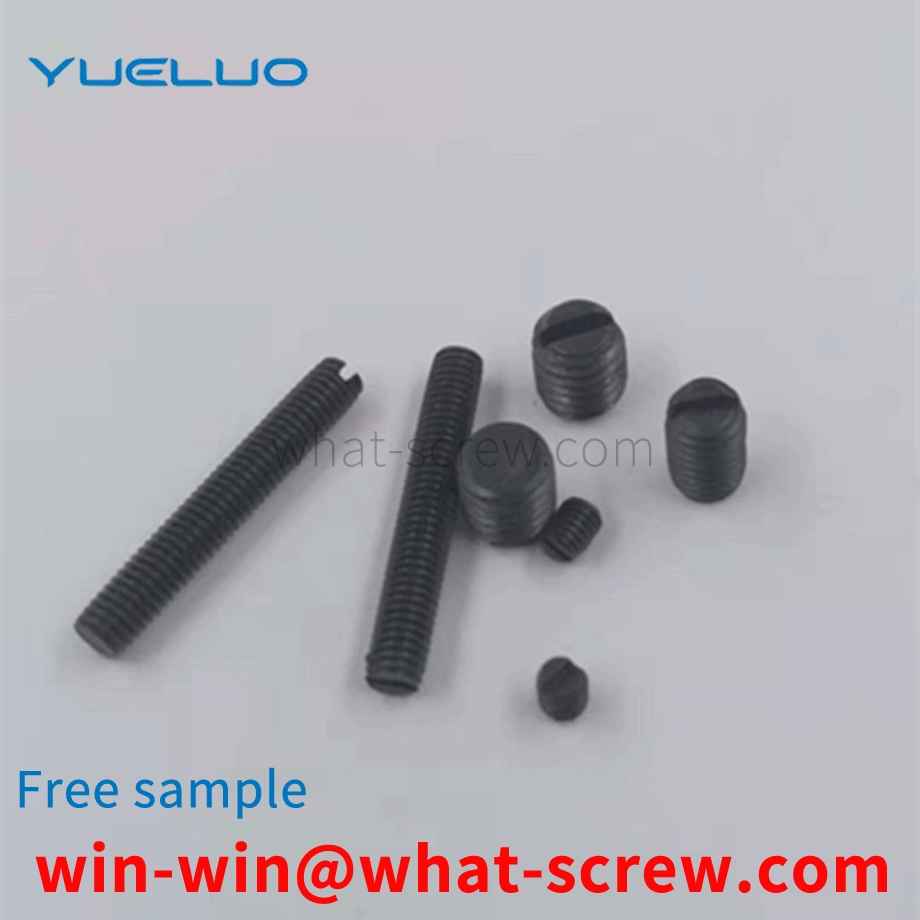What is the tolerance range of precision screws?
What is the tolerance range of precision screws?
Service Hotline
+86760-8787 8587We have more than ten years of experience in screw industry production, the main products are: nylon hexagon nut, machine screw, screw cap bolt, computer number copper column, blackened hexagon nut, ring screw cap, high crotchet bolt, GB827 dome head rivet , Conical locking washers, extended full-tooth hex screws, double-ended plastic pillars, closed flat round head rivets, anti-loose self-contained gasket nuts, Q460 countersunk head rivets, round head pan head bolts and other fasteners, Due to the different materials and specifications of the products, the prices are also different, please contact us if necessary.


The hexagonal flange surface nut mainly includes a nut body, a flange surface is fixed at one end of the nut body, and a cap is fixed at the other end of the nut body. Has good sealing and corrosion resistance. The hexagonal flange surface nut mainly includes a nut body, a flange surface is fixed at one end of the nut body, and a cap is fixed at the other end of the nut body; since the cap is set on the nut body, it has the Better sealing can effectively prevent rain, moisture, dust and other harmful substances from immersing in the nut body, prevent the nut body from rusting, and greatly extend the service life of the hexagonal flange nut.

At present, it has become very common to use automated tools to hit screws. However, when the material of the fastening object is relatively soft, the screw fastening is often prone to skew, not sticking, and the screw hole is damaged during the fastening process. Metal shavings can also be created in the shards, which can short out the board.


NPT, PT, G are all pipe threads. NPT is the abbreviation of National (American) Pipe Thread, which belongs to the American standard 60-degree taper pipe thread, which is used in North America. National standards can be found in GB/T12716-1991 PT is the abbreviation of Pipe Thread, which is a 55-degree sealed conical pipe thread, which belongs to the Whitworth thread family and is mostly used in Europe and the Commonwealth of Nations. Commonly used in water and gas pipe industry, the taper is specified as 1:16. The national standard can be found in GB/T7306-2000 G is a 55 degree non-threaded sealing pipe thread, which belongs to the Whitworth thread family. Marked as G stands for cylindrical thread. National standards can be found in GB/T7307-2001 In addition, the 1/4, 1/2, 1/8 marks in the thread refer to the diameter of the pipe, and the unit is inches. People in the industry usually refer to thread size in points, 1 inch equals 8 points, 1/4 inch is 2 points, and so on. G seems to be the general name for pipe threads (Guan), and the division of 55 and 60 degrees is functional, commonly known as pipe circle. That is, the thread is machined from a cylindrical surface. ZG is commonly known as pipe cone, that is, the thread is made of a conical surface. The general water pipe joints are like this. Rc means conical internal thread ZG means taper pipe thread, 3/4 means inch mark, which is 3/4 inch conical pipe Thread, there is in the Hardware Manual. The national standard stipulates that the major diameter of ZG 3/4 thread is 26.44 mm. Please refer to Metric, American and British Thread Standard Manual (Third Edition). Its representation method should be: ZG 3 /4″. Among them (〃) is the representative symbol for inches. One inch is equal to 8 inches. The origin of 3/4 is 6/8=3/4. Commonly known as 6 points. Similarly, the major diameter of ZG 1/2″ thread≈21 mm. Commonly known as 4 points. ZG 1″ thread diameter ≈ 33 mm. Commonly known as 1 inch. ZG 1 1/2″ thread pipe outer diameter ≈ 48 mm. Commonly known as 1 inch and a half. Taper pipe thread is very similar to pipe thread, the difference is Only in the taper. Note that the basic size of the pipe thread and ordinary thread is different. DN is the nominal diameter

The pretreatment process is a key process that determines the quality of nickel-phosphorus plating on high-strength bolts. The purpose of this process is to remove the passivation layer on the surface of the bolt and prevent the regeneration of the passivation film. The execution of this process directly determines the degree of bonding between the substrate and the coating. Most of the quality accidents in production are caused by poor pretreatment of bolts. Before plating, the oil, rust and oxide scale attached to the surface of the bolt must be carefully removed; the difference with electroplating is that it should be inspected more carefully, and plating is absolutely not allowed on unclean bolts. ① Inspection of bolts: Visual inspection of the surface quality of bolts requires that any burrs left by processing must be removed, and sharp edges and corners must be rounded. ② Manual degreasing; ensure that the surface of the substrate is free of oil stains. ③ Soak and remove oil; boil the bolts in alkaline water to remove the surface oil. ④ Pickling: In order to prevent the alkaline degreasing solution from contaminating the flash nickel plating tank, electro-activation treatment is carried out with pickling solution before flash nickel plating. ⑤ Electro-activation; electro-activation treatment with acid solution. ⑥ Flash nickel plating; flash nickel plating should be used for low alloy steel to increase the bonding strength between the coating and the substrate.

The above content is uploaded by Yueluo or the Internet. If there is any copyright issue, please contact [email protected].

What is the tolerance range of precision screws?

How to choose the right stainless steel screw manufacturer?

Why is there an R angle under the head of the hexagon head s...

We have more than ten years of production experience in the ...

We have more than ten years of production experience in the ...

We have more than ten years of production experience in the ...

We have more than ten years of production experience in the ...